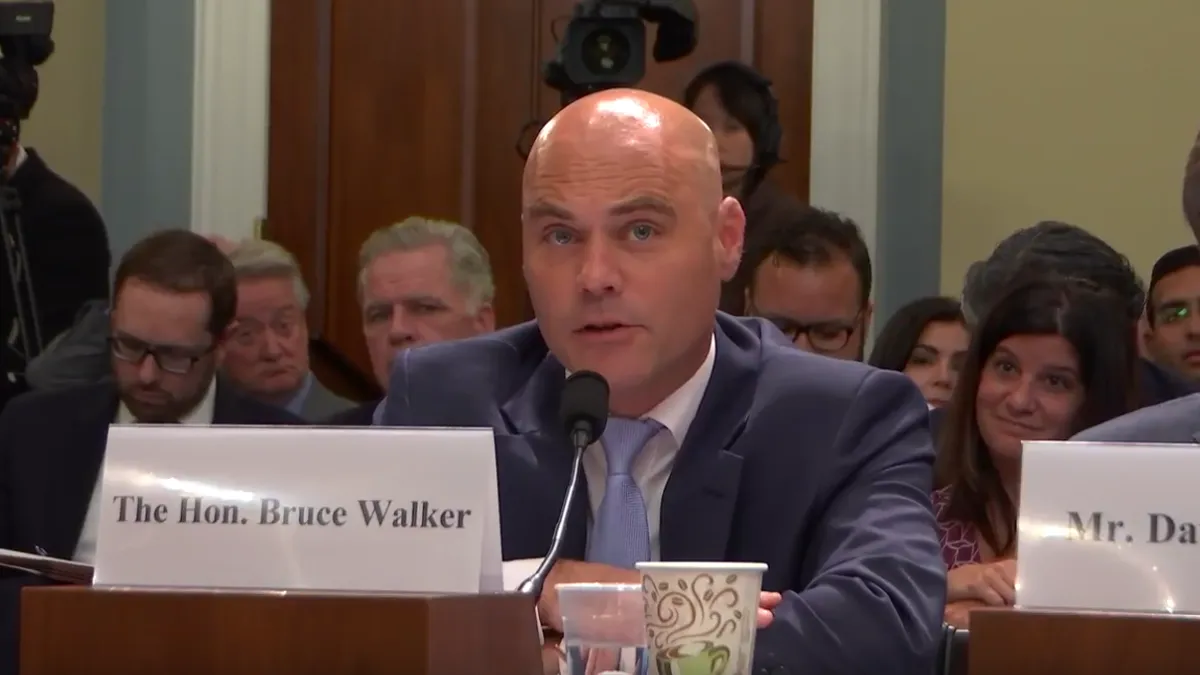Dive Brief:
-
Utility regulators need to adjust the way they analyze the value of energy storage to quicken the pace of deployment, Department of Energy Assistant Secretary Bruce Walker said Sunday at the National Association of Regulatory Utility Commissioners conference in Washington, D.C.
-
Typically, the approach to storage has relied on "this pro forma basis of determining whether it's viable from a cash flow perspective," said Walker. But the monopoly utility model was traditionally "not about cost. It was about making investments that are right and that will eventually pay themselves out when we do it."
-
The sector overall should also think more seriously about spurring different storage technologies than lithium-ion, in part to cut back on costs and reliance on rare earth imports. "We've made that turn away from lithium and vanadium and things like that and we're using things that are much more readily available and ubiquitous within the United States," he said.
Dive Insight:
Notably absent from Sunday's discussion on electric reliability and resilience was baseload power, far from discussions in 2018 around subsidizing fuel secure resources such as nuclear and coal.
Instead, Walker touted the benefits of storage, encouraging regulators to analyze the technology more holistically, and take advantage of the investor-owned utility model and its ability to make big investments and depreciate those costs over time.
"The problem is when we do the analysis for storage, we don't really identify and capture all the benefits that can be utilized or gleaned from storage," said Walker.
"There are things that we gloss over in the industry that don't help the pro forma analysis for storage specifically," including black start capabilities, ancillary services, frequency control, undervoltage and black start loading.
He pointed to lessons learned in Puerto Rico, where a significant portion of the U.S. territory's economy comes from manufacturing, and outages can be devastating.
"For us to sit in this industry today and talk about a four minute and 59 second outage not being an outage is fairly disingenuous," he said.
"And so I think we've got to evaluate this model a little bit. [In] Puerto Rico, it turns out storage is one of the most fantastic opportunities for investment because of the significant impact on manufacturers that go unnoticed because of the way we look at reliability."
Energy storage and microgrids are expected to become an increasingly important component of national security and the overall reliability of the grid, he said.
His office, in conjunction with national labs, has been focused on quickening the pace of deployment, with $5 million earmarked this year, $40 million next year and $30 million the year after that. Specifically, research in the DOE labs has been focused on using minerals and chemistries that use domestic components, such as molten salt storage or zinc manganese dioxide, part of its broader efforts to establish a domestic supply chain of energy storage by 2030.
"I tell my team that if you want to make it as cheap as dirt, start with dirt," he said.
Part of the challenge from moving away from lithium has been that you don't get the same power density in other technologies, but working with the Pacific Northwest National Laboratory has allowed them to look beyond those limitations.
"It doesn't matter if you pick something that has less power density upfront, because we can do the R&D, we can do the engineering to actually make it work and get what we need," said Walker.
"Basically, we've broken this tie that has existed through lithium batteries of capacity and power density. Now we can actually control them separately, which enables us to really take a look at a lot of different capabilities from a chemistry standpoint."














